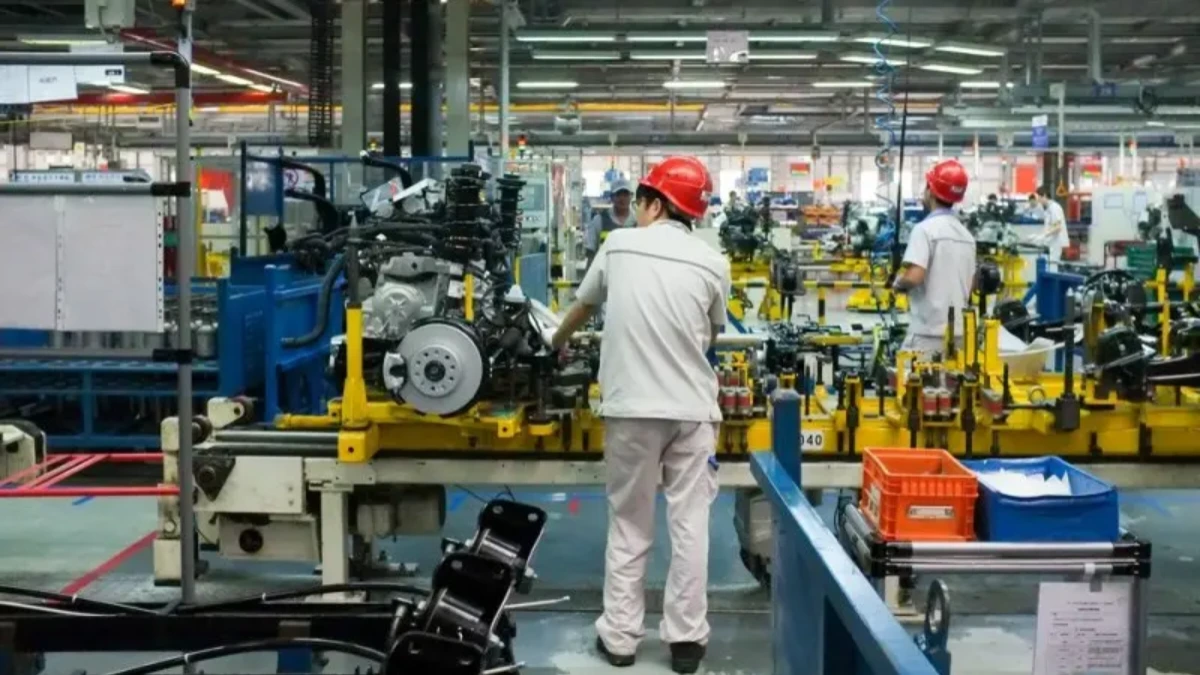BEIJING — China industrial profit growth accelerated sharply in September, rising 21.6 percent from a year earlier the biggest increase in nearly two years, according to data released Monday by the National Bureau of Statistics (NBS).
The surge follows a 20.4 percent gain in August and signals that Beijing’s campaign to stabilize factory margins is beginning to take hold despite persistent global trade tensions.
After months of weakness, China’s manufacturing and industrial sectors are showing early signs of recovery. For the first nine months of 2025, profits at major industrial firms climbed 3.2 percent year on year, up from a 0.9 percent gain in the January to August period.
China’s industrial profit growth had been under pressure for much of the past year due to deflation in producer prices, a sluggish property market, and cautious consumer spending.
However, measures by Chinese authorities to limit excessive price competition and stabilize input costs have provided relief for manufacturers.
“The profit recovery is a result of improved pricing discipline and policy coordination,” said Yu Weining, chief statistician at NBS. “Yet, sustained growth still depends on stronger domestic demand and stable exports.”
Economists view September’s data as an encouraging sign, but they caution that the rebound may not be sustainable without a broader economic revival.
“China industrial profit growth looks impressive on paper, but much of it comes from a low comparison base last year,” said Zhang Rui, senior economist at Sinobridge Consulting in Beijing.
Manufacturers are benefiting from government support, but consumer demand is still weak. Nomura’s analysts echoed similar caution, projecting that China’s export momentum could slow in the final quarter as global tariffs and trade barriers rise.
“We expect export growth to decelerate in Q4 due to high base effects and weaker overseas demand,” the report said. At the same time, Beijing has signaled a shift toward long term industrial upgrades rather than short term stimulus.
“Policymakers are prioritizing innovation, energy efficiency, and advanced manufacturing,” said Louise Loo, head of Asia Economics at Oxford Economics. “They see these as more sustainable engines of profit growth.”
Manufacturing profits rose 9.9 percent in January September compared with a year earlier. Electricity, heat, fuel, and water supply firms reported a 10.3 percent increase. Mining companies saw profits plunge 29.3 percent due to lower commodity prices.
High tech manufacturing was the standout performer, with profits jumping 26.8 percent in September. The sector’s rapid expansion underscores China’s growing emphasis on advanced technologies and value-added production.
State owned enterprises saw profits fall 0.3 percent. Foreign invested firms (including Hong Kong, Macao, and Taiwan enterprises) rose 4.9 percent.
Private companies gained 5.1 percent. Producer prices fell 2.3 percent in September, while consumer prices slipped 0.3 percent extending China’s deflationary run into a third year but also easing cost pressures for manufacturers.
On the factory floors, managers report cautious optimism. “In the past six months, we were cutting prices just to survive,” said Chen Wei, a machinery plant manager in Zhejiang province. “Now, we finally see stable orders and better margins.”
A procurement officer at an electronics manufacturer in Shenzhen said export orders had helped offset weak local demand. “Foreign clients are returning, but domestic consumption is still slow,” she said.
Meanwhile, small business owners remain wary. “Costs are stable, but competition is still intense,” said Liu Fang, who runs an auto parts company in Guangzhou. “We need domestic buyers to feel confident again.”
While China industrial profit growth offers a glimmer of recovery, economists warn that the momentum could fade as global demand cools and structural challenges persist.
Fixed asset investment declined 0.5 percent in the first nine months of 2025 the first drop since 2020 highlighting weakness in construction and infrastructure sectors.
Industrial output, however, rose 6.5 percent year on year in September, suggesting manufacturing activity remains resilient.
“The latest data show a recovery that is policy driven, not consumption driven,” said Xu Ning, chief economist at Horizon Analytics. “To sustain profit growth, China must rebuild consumer confidence and encourage private investment.”
Beijing’s recent economic planning meetings emphasized “industrial upgrading” and “technological breakthroughs” over broad fiscal stimulus signaling a preference for structural reforms rather than large scale spending.
China industrial profit growth surged to 21.6 percent in September its strongest pace since late 2023 driven by government measures to curb price wars and bolster high tech manufacturing.
The rebound provides short term relief for a struggling economy but highlights a deeper challenge sustaining profitability amid deflation, global trade friction, and weak domestic demand.
As policymakers balance stability with long term transformation, the coming months will determine whether China’s factory recovery marks a turning point or a temporary rebound.

